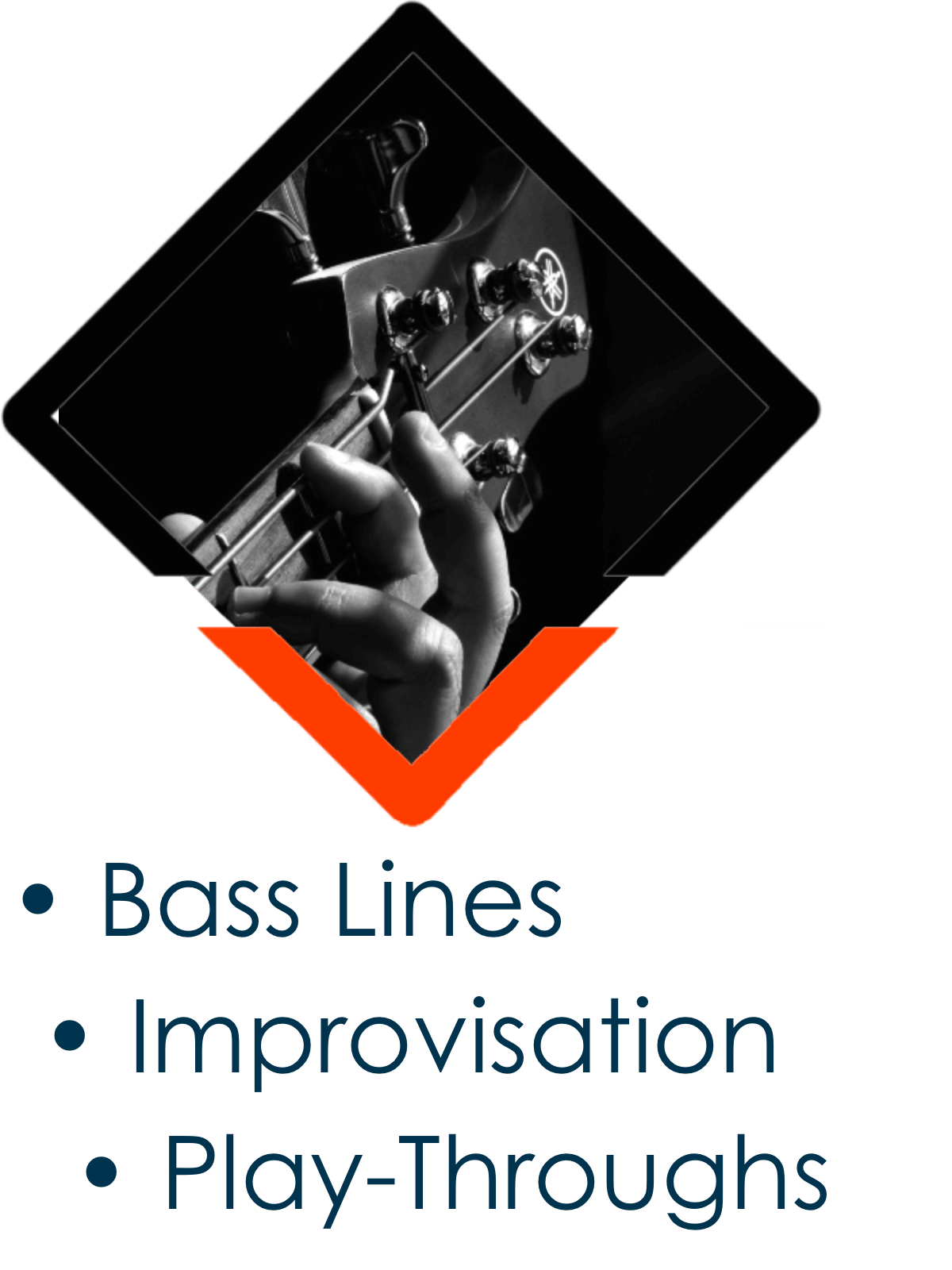Quick Navigation:
Bass Line Development
Taking things a bit further by focusing on outlining chord tones and creating ostinatos (repeating patterns that help you sound more compositional in your approach)
Using dynamics to really bring it all together and make it sing.
Here is a primer on my approach to walking bass lines.
Check out the Walking Module to go much deeper and at a more relaxed pace
Transcribing ‘116th St.’ in real time and showing you what my process looks like and how I perceive things and work them out.
A student asked about this tune so I transcribed a chunk of it and broke it down here. What a great track!
Improvisation
Combating the ‘blank canvas’ reaction to soloing. Here’s how I think with regard to starting your solo, giving yourself something to work from, using space to create phrases and pacing yourself so you have somewhere to go.
Without space we don’t have phrases and creating phrases are what a good solo is all about. This is a big part of ‘telling a story’ when you improvise.
Breaking down a groove solo of mine that got some love on social media. Here’s what I’m playing and what’s going through my head.
Often, our fingers get in the way of making music. We start playing the same patterns and just can’t seem to get away from that. Here’s how I use vocalization as a way to tap into the music that I want to hear.
Choosing just a few scale tones to play through changes is a wonderful way to force ourselves to do more with less as well as a stellar way to challenge ourselves to find those notes on demand.
Admittedly, this lick is a little daunting at first but a student heard me play it and asked me to break it down and I thought you might dig this. It’s also a great insight into the way I think about things (using both shapes and intervallic awareness as I play).
A phenomenal way to teach yourself to see the connecting threads through changes. This kind of exercise really helped me to play through changes and not just at them.
This is a great primer video for the voice-leading lesson as well.
Voice leading is basically the term for moving linearly through chord changes. Seeing how the note you’re currently playing relates to the next chord and moving by only whole or half steps to reflect an appropriate note for the next chord. This is how improvisors thread a line through changes without jumping around every time a chord changes. No matter where we are, we are either on or very near a great note choice for the next chord.
>>Additional Guide Tone examples<<
(provided by Daniel McGillicuddy in his Bass Accumulations space within the community)
How I explore using various scales and approaches for any chord type. I’ll walk you through my thought process on how I might get away from playing the most basic version of a scale and wind up at (sometimes seemingly disparate) scale choices for a chord type.
For many of us, the hardest part of any solo is how to start and how to end. Here is how I try and think about things when I get ‘the nod’ from someone on stage.
Some fairly quick and easy ways to explore playing over chords from places other than the root and implying different types of harmony (without hurting your brain).
Taking things a step further and beginning to break out of our major scale harmony.
Song Play-Throughs
I play through the standard ‘Beatrice’ and then walk you through what I’m thinking and playing, step by step.
Transcriptions:
I walk and solo through the form on Beautiful Love and then give a little breakdown of what I’m thinking as I play.
Download:
Beautiful Love Melody Analysis
(courtesy of Daniel McGillicuddy)
(courtesy of Daniel McGillicuddy)
Lessons referenced:
I play through the standard ‘Stella By Starlight’ and then walk you through what I’m thinking and playing, step by step.
Download
taken from the Erskine Essentials Play Alongs
(courtesy of Daniel McGillicuddy)







What are approach notes and enclosures?
I break them down here and talk about how to explore them on your own.